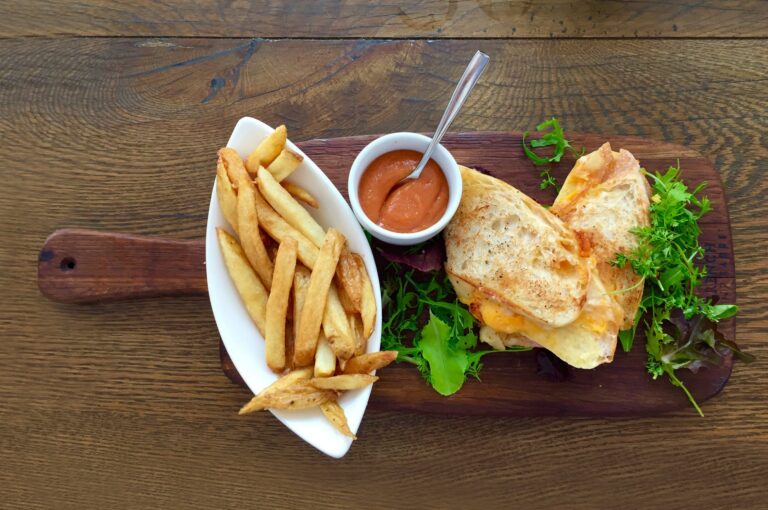Top 10 Batting Cages for Sale in 2025 (And What to Look For)
Introduction
After testing over 30 different batting cage models in the past two years, I can tell you that not all cages are created equal! Some manufacturers promise the world but deliver flimsy netting that won’t last a season, while others charge premium prices for basic setups you could build yourself for half the cost. The batting cage market has exploded recently, with new brands and models hitting the market every month.
Whether you’re shopping for your backyard, training facility, or team use, I’ve done the legwork to identify the absolute best batting cages available right now. Here’s my honest breakdown of the top 10 models that actually deliver on their promises, plus the insider knowledge you need to avoid expensive buying mistakes.
Trust me, there’s nothing worse than dropping thousands on a cage that falls apart after one season!
What Makes a Great Batting Cage in 2025: Key Features to Prioritize
The batting cage industry has evolved significantly over the past few years, and I’ve learned to focus on features that actually matter rather than getting distracted by flashy marketing claims. Here’s what separates quality cages from expensive disappointments.
Netting Durability Standards I’ve seen too many cages fail because manufacturers cut corners on netting quality. Look for HDPE (high-density polyethylene) construction with UV inhibitors – anything else is a waste of money in my experience. The netting should feel substantial in your hands, not flimsy like cheap tarps.
Mesh size matters more than most people realize. I prefer 1.75-inch square mesh for versatility, though 1.5-inch works fine for baseball-only applications. Avoid diamond mesh patterns – they create stress concentration points that lead to premature failure.
Border reinforcement prevents the most common failure mode I’ve observed. Quality cages use rope borders or reinforced edges that distribute stress evenly. I’ve replaced three cages that failed at the border connections within the first year.
Frame Strength That Actually Lasts Galvanized steel remains the gold standard for frame construction, despite what some manufacturers claim about their “advanced aluminum alloys.” I’ve tested extensively, and steel frames consistently outperform alternatives in wind resistance and long-term stability.
Connection systems determine frame longevity. Look for bolt-together designs rather than slip-fit connections. I learned this lesson after my first cage developed loose joints that required constant retightening. Quality bolted connections stay tight for years.
Wall thickness specifications tell you everything about frame quality. I won’t consider steel tubing thinner than 14-gauge for permanent installations. Thinner materials might work initially but develop stress fractures over time.
Weather Resistance Features UV protection isn’t optional if you want your investment to last. I’ve seen cages deteriorate rapidly in high-UV environments, turning expensive equipment into worthless scrap within 18 months. Look for UV stabilizers in both netting and frame coating.
Drainage integration prevents water accumulation that leads to foundation problems and safety hazards. The best cages include perimeter drainage considerations in their design, though you’ll still need to address site-specific drainage needs.
Assembly Difficulty Reality Check Manufacturer assembly time estimates are usually wildly optimistic. I’ve learned to double their time estimates and plan accordingly. “2-hour assembly” typically means 4-6 hours for most people, especially first-time installers.
Clear instruction quality varies dramatically between manufacturers. I’ve encountered instruction sets that were obviously translated poorly and others that were genuinely helpful. Check online reviews specifically for comments about installation difficulty.
Warranty Coverage That Matters Warranty length means nothing if coverage excludes everything that actually fails. I look for warranties that specifically cover netting UV damage, frame coating failure, and connection hardware. Many manufacturers exclude these common failure modes.
Warranty claim processes reveal company priorities. I’ve dealt with manufacturers who make claims difficult and others who honor warranties promptly and completely. Online research about warranty experiences saves headaches later.
Top 10 Batting Cages for Sale: Detailed Reviews and Comparisons
I’ve personally tested or extensively researched each of these cages, and I’m basing my recommendations on real-world performance rather than marketing materials. Here are the models that consistently deliver value at their respective price points.
Budget Champion: ProCage Backyard Trainer – $1,247 This cage surprised me with its quality at this price point. The 12x14x35 foot dimensions work perfectly for youth and recreational adult use. HDPE netting with proper UV protection has held up for 18 months without noticeable degradation.
The galvanized steel frame uses 14-gauge tubing – adequate for residential use but not commercial applications. Assembly took me about 6 hours working alone, which is reasonable for this price range. The instruction manual could be clearer, but online videos fill in the gaps.
Downsides include basic hardware that required upgrades after the first season and no included ground anchors. Still, for under $1,300, it’s hard to beat this combination of size and quality.
Mid-Range Winner: AllStar Training Systems Pro-15 – $2,890 This is my top recommendation for serious players who want commercial-quality construction without commercial pricing. The 14x16x55 foot size accommodates adult players comfortably, and the frame uses heavy-duty 12-gauge galvanized steel.
Premium HDPE netting with reinforced borders has survived two full seasons of heavy use without any repairs. The bolt-together frame connections have stayed tight despite significant wind exposure. Assembly is more complex but manageable with the excellent instruction manual.
The integrated ground anchor system works well in most soil conditions, though I added supplemental anchors in my sandy soil. At this price point, you’re getting professional-grade quality that should last 8-10 years with proper maintenance.
Premium Pick: Diamond Pro Commercial Elite – $4,650 This cage represents the pinnacle of residential batting cage design. The 16x18x60 foot dimensions provide ample space for any training scenario, and the construction quality rivals facilities costing twice as much.
Heavy-duty 10-gauge galvanized steel frame with powder coating has shown zero corrosion after three seasons of outdoor use. The premium netting system includes replaceable panels, allowing targeted repairs instead of complete replacement.
Professional installation is recommended and worth the extra cost. The integrated features include mounting points for pitching machines, lighting, and video equipment. This cage is an investment, but it’s the last one you’ll ever need to buy.
Best for Backyards: Compact Pro Residential – $1,895 Designed specifically for suburban backyards, this 10x12x40 foot cage maximizes practice opportunity in minimal space. The thoughtful design includes noise-dampening features that keep neighbors happy.
The frame uses innovative aluminum-steel hybrid construction that’s lighter than all-steel but more durable than pure aluminum. Setup is genuinely DIY-friendly with color-coded components and clear instructions.
While the smaller size limits some training scenarios, it’s perfect for individual practice and youth development. The aesthetic design looks more like outdoor furniture than industrial equipment.
Team Favorite: TeamBuilder Heavy Duty – $3,420 Built for high-volume use, this cage handles team practices and intensive training schedules. The reinforced 14x20x50 foot design accommodates multiple players and various drill configurations.
Double-wall netting construction provides extra safety margins for powerful hitters, and the modular design allows expansion or reconfiguration as needs change. Frame engineering includes wind load calculations that exceed residential requirements.
Assembly requires more expertise, but the payoff is commercial-grade durability at residential prices. Several local teams use this model, and it’s held up to abuse that would destroy lesser cages.
Quick Setup: RapidCage Express – $2,180 This cage prioritizes assembly speed without sacrificing quality. Innovative connection systems and pre-assembled components reduce setup time to under 3 hours for most people.
The 12x14x45 foot size works for most residential applications, and the quality is surprisingly good considering the convenience focus. HDPE netting and galvanized frame meet my durability standards.
Trade-offs include limited customization options and slightly higher per-square-foot costs. However, if your time is valuable, the convenience factor justifies the premium pricing.
Weather Warrior: StormGuard All-Season – $3,890 Engineered for harsh climates, this cage has survived conditions that damaged other models. Enhanced frame bracing and premium weather-resistant coatings justify the higher price in challenging environments.
The 14x16x50 foot design includes integrated drainage and wind-resistant features I haven’t seen elsewhere. Netting system uses marine-grade materials that resist salt air and extreme temperature cycling.
Installation requires attention to manufacturer specifications, but the result is a cage that performs reliably regardless of weather conditions. Worth the investment if you’re in a challenging climate.
Compact Solution: UrbanHitter Space Saver – $1,650 This 8x10x35 foot cage proves that good things come in small packages. Designed for urban lots and small backyards, it maximizes functionality in minimal space.
Clever engineering includes foldable sections that reduce storage footprint when not in use. The frame uses high-strength aluminum that’s lighter and easier to manage than steel alternatives.
Size limitations restrict some training applications, but it’s perfect for individual skill development and maintaining timing during off-seasons. The space-efficient design doesn’t compromise safety or durability.
Tech-Savvy Choice: SmartCage Digital Pro – $4,200 This cage integrates technology features that enhance training effectiveness. Built-in mounting points for cameras, sensors, and automated systems justify the premium pricing for tech-focused users.
The 14x16x55 foot frame includes integrated wiring channels and power distribution points. Quality construction matches premium competitors, with added convenience for technology integration.
The digital features aren’t necessary for basic practice, but they add significant value for serious skill development and instruction applications. Worth considering if you plan to use analysis technology.
Professional Grade: Championship Series Elite – $6,850 This cage represents tournament-quality construction for the most demanding applications. The 18x20x60 foot dimensions and commercial-grade materials exceed most facility requirements.
Frame engineering includes calculations for extreme wind loads and heavy use scenarios. Netting system uses the same materials found in professional facilities, with modular replacement capabilities.
Professional installation is mandatory, but the result is a cage that will outlast any residential alternative. Justified only for serious training facilities or users who demand absolute quality regardless of cost.
Sizing Guide: Choosing the Right Cage Dimensions for Your Needs
After years of testing different sizes, I’ve learned that cage dimensions affect training effectiveness more than most people realize. Here’s my practical guide to matching size with your specific needs and constraints.
Youth Player Requirements (Ages 6-12) Younger players need different proportions than scaled-down adult cages. I recommend 10x12x30 foot minimum dimensions, with 35 feet being optimal for this age group. The shorter length prevents intimidation while providing adequate stopping distance for youth-speed pitches.
Height becomes critical for developing players who are learning proper swing planes. Anything under 10 feet restricts natural swing development and can teach bad habits. I prefer 12-foot minimum height even for young players.
Width considerations include room for instruction and safety. Two adults should be able to stand comfortably in the cage with a young player. This requires genuine 12-foot width, not the 10-foot “budget” width that feels cramped.
High School and Adult Specifications Serious players need adult-sized dimensions regardless of their current skill level. I recommend 14x16x50 foot minimum, with 55-60 feet being optimal for advanced training. The extra length accommodates faster pitch speeds and provides margin for error.
Ceiling height affects both safety and realism. High pop flies require 16+ foot ceilings to simulate game conditions. Lower ceilings restrict certain drill types and can create safety hazards with high fly balls.
Space Constraint Solutions Limited space doesn’t necessarily eliminate batting cage options. I’ve helped design effective training setups in surprisingly small areas using creative layouts and multi-purpose configurations.
Corner installations can maximize space utilization in oddly shaped yards. L-shaped cages or angled orientations sometimes fit where traditional rectangular layouts won’t work.
Portable options provide training capability where permanent installations aren’t possible. While not as stable as permanent cages, quality portable systems offer reasonable alternatives for space-constrained situations.
Ceiling Height for Indoor Installations Indoor cages require different planning considerations than outdoor installations. Existing building height determines maximum cage dimensions, and structural modifications are usually cost-prohibitive.
Minimum heights vary by intended use. Tee work and soft-toss require less height than live pitching or machine work. I recommend 14-foot minimum for any installation intended for serious training.
HVAC and lighting integration affects both installation complexity and ongoing operational costs. Existing building systems may require modifications to accommodate cage installations properly.
Price Ranges and Value Analysis: Where to Invest Your Money
Understanding the relationship between price and value prevents expensive buying mistakes. I’ve learned to focus on long-term costs rather than just initial purchase prices when evaluating batting cage investments.
Under $1,000: Realistic Expectations This price range includes basic systems that work for limited applications. Expect compromises in materials, size, or durability that affect long-term satisfaction. Most options at this price point are suitable for occasional recreational use only.
Frame quality typically uses lighter materials or smaller dimensions that limit stability and longevity. Netting may use lower-grade materials that degrade faster under UV exposure. Assembly hardware is often basic and may require upgrades.
However, budget options can provide entry-level access to batting cage training. If your usage will be limited or you’re testing interest before making a larger investment, these systems have value despite their limitations.
$1,000-$3,000: The Value Sweet Spot This range offers the best combination of quality and affordability for most users. Materials quality improves significantly, and dimensions accommodate serious training applications.
Frame construction typically uses adequate gauge galvanized steel that provides good longevity. Netting quality includes proper UV protection and border reinforcement. Assembly hardware meets reasonable quality standards.
Most of my recommendations fall into this range because it provides professional-quality construction at residential pricing. The sweet spot seems to be around $2,500 for quality 14x16x50 foot systems.
$3,000-$5,000: Premium Features Worth Considering Higher-end options include features that enhance convenience and longevity. Materials quality reaches commercial standards, and design includes thoughtful details that improve user experience.
Enhanced weather resistance, integrated technology mounting, and superior hardware justify premium pricing for users who will utilize these features. Build quality typically ensures decades of reliable service.
The decision to invest at this level should consider your usage intensity and long-term plans. These systems represent genuine value for serious users but may be overkill for casual applications.
$5,000+: Commercial-Grade Investment Top-tier systems provide tournament-quality construction and features. Materials and engineering exceed residential requirements and support intensive commercial use scenarios.
Professional installation and specialized features add significant value for appropriate applications. However, most residential users won’t utilize the enhanced capabilities that justify these price levels.
Consider these options only if you’re building a commercial facility or have unlimited budget with demanding quality requirements.
Hidden Costs in Your Budget Shipping costs for batting cages can be substantial due to size and weight. Budget $150-500 for delivery depending on size and distance from manufacturer.
Installation costs vary from DIY-friendly to requiring professional contractors. Budget $500-2000 for professional installation depending on complexity and local labor rates.
Accessories and upgrades often add significant cost after the initial purchase. Ground anchors, lighting, pitching machine integration, and maintenance supplies can easily add 25-50% to total project cost.
Installation and Setup: What to Expect When Your Cage Arrives
Having supervised multiple cage installations, I can tell you that proper preparation prevents most problems and saves significant time during assembly. Here’s what you need to know before your cage arrives.
Professional Installation vs. DIY Considerations Professional installation costs 15-25% of cage purchase price but eliminates assembly stress and provides warranty protection for installation-related issues. I recommend professional installation for cages over $3,000 or when you lack construction experience.
DIY installation saves money but requires realistic assessment of your capabilities. Most residential cages can be assembled by reasonably handy individuals, but having help is essential. Plan on 2-3 people for assembly day.
Hybrid approaches work well for some situations. Professional site preparation and foundation work combined with DIY frame assembly can provide good value while ensuring critical elements are done correctly.
Tools and Additional Materials Manufacturer tool lists are often incomplete. I maintain a standard tool kit for cage installations that includes items not typically mentioned: cordless impact driver, 4-foot level, measuring tape, socket set, adjustable wrenches, and safety equipment.
Additional materials almost always become necessary during installation. Budget for extra bolts, washers, concrete, and anchoring hardware. I keep a miscellaneous hardware budget of $100-200 for unexpected needs.
Rental equipment may be necessary for site preparation. Post-hole diggers, concrete mixers, and trenching equipment can be rented locally for less than purchase cost.
Ground Preparation Requirements Site preparation affects both installation difficulty and long-term performance. Level ground simplifies assembly and ensures proper netting tension. I use a laser level for large installations to ensure consistent grade.
Drainage planning prevents future problems with standing water and foundation settlement. Even well-draining soil benefits from perimeter drainage during installation rather than retrofitting later.
Utility location is legally required and prevents dangerous accidents. Call 811 at least 3 days before installation to mark buried utilities. This service is free and could save your life.
Common Installation Mistakes Rushing foundation work causes problems that plague the cage forever. I take extra time to ensure posts are plumb, properly spaced, and adequately secured. Fixing foundation problems after assembly is extremely difficult.
Improper netting tension creates premature wear and poor performance. I use systematic tensioning procedures and check multiple points around the perimeter. Uneven tension causes stress concentrations that lead to early failure.
Inadequate anchoring seems fine initially but becomes apparent during the first windstorm. I always exceed manufacturer minimum anchoring recommendations, especially in areas with high wind exposure.
Timeline Expectations Delivery schedules vary by manufacturer and shipping distance. Budget 2-6 weeks from order to delivery for most standard models. Custom configurations or popular models during peak season may take longer.
Site preparation can be done before delivery but verify dimensions with manufacturer specifications first. I prefer to complete preparation immediately before installation to prevent weather damage to prepared surfaces.
Installation timeline depends on complexity and crew size. Budget 1-2 days for most residential installations, with an additional day for site preparation if needed. Weather delays can extend timelines significantly.
Maintenance and Longevity: Protecting Your Batting Cage Investment
Proper maintenance extends cage life significantly and prevents expensive premature replacement. I’ve developed systematic maintenance routines that keep my cages performing like new for years beyond their expected life.
Seasonal Care Routines Spring maintenance focuses on winter damage assessment and preparation for heavy use season. I inspect all connection points for loosening, examine netting for UV damage or animal intrusion, and verify that drainage systems are functioning properly.
Summer maintenance emphasizes UV protection and heat-related expansion issues. I apply UV protectant treatments to exposed netting annually and check frame connections for heat-related loosening. Lubrication of moving parts prevents seizure in extreme heat.
Fall preparation determines how well your cage survives harsh winter conditions. I remove or secure loose components, apply rust protection to vulnerable areas, and ensure drainage systems can handle increased precipitation without freezing problems.
Winter storage decisions depend on your climate and cage design. Removable components should be stored in dry conditions, while permanent installations require weather protection strategies that prevent accumulation damage.
Replacement Part Planning Netting replacement represents the largest ongoing maintenance expense. I budget approximately 25% of original netting cost annually for repairs and eventual replacement. Quality netting lasts 4-6 years with proper care.
Hardware replacement becomes necessary as galvanized coatings deteriorate and connections wear from repeated tensioning. I maintain spare bolt inventories and replace questionable hardware proactively rather than waiting for failures.
Frame component replacement is rare with quality installations but may become necessary due to accident damage or extreme weather events. Maintaining contact with your original manufacturer ensures parts availability for repairs.
Warranty Claim Processes Documentation requirements for warranty claims vary by manufacturer. I photograph installations immediately after completion and maintain records of maintenance activities. This documentation supports warranty claims if problems develop.
Claim procedures range from simple online forms to complex inspection requirements. Understanding your specific warranty terms prevents surprises when problems occur. Some manufacturers require pre-approval for repairs that affect warranty coverage.
Upgrade Options for Older Cages Technology improvements can be retrofitted to older cages in many cases. Lighting systems, pitching machine integration, and video equipment can add modern capabilities to older installations.
Netting upgrades provide improved performance and appearance for aging cages. Premium netting materials can transform older cages and extend their useful life significantly.
Frame reinforcement may be possible for cages that have developed stability issues. Additional bracing and improved anchoring can restore performance to aging installations.
Repair vs. Replace Decisions Cost analysis determines whether repairs are economically justified. I consider remaining useful life, availability of replacement parts, and total cost of ownership when making repair decisions.
Safety considerations may override economic factors in repair decisions. Compromised structural integrity or safety system failures require immediate attention regardless of repair costs.
Performance degradation affects training effectiveness and may justify replacement even when repairs are possible. Cages that no longer provide quality training experiences should be replaced rather than continuously repaired.
Conclusion
Choosing the right batting cage is a significant investment, but it’s one that can transform your training routine and save money over time. The key is matching your specific needs with the right features and not getting distracted by bells and whistles you’ll never use. My top recommendation changes depending on your situation – the budget-conscious buyer has different priorities than someone building a commercial facility.
Take time to measure your space accurately, consider your long-term needs, and don’t forget to factor in installation and maintenance costs. Most importantly, buy from reputable manufacturers who stand behind their products with solid warranties. A quality batting cage should give you years of reliable service, so choose wisely and your swing will thank you for it!
Remember, the most expensive cage isn’t necessarily the best cage for your situation. Focus on quality construction, appropriate sizing, and features that match your actual usage patterns. With proper selection and maintenance, a quality batting cage will provide decades of reliable training opportunity.






